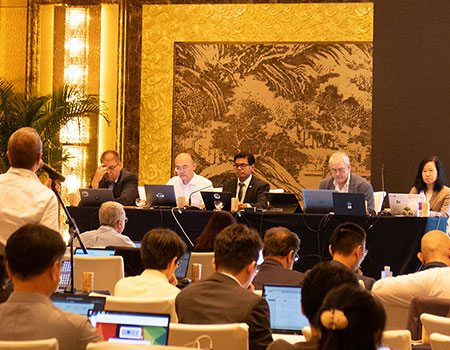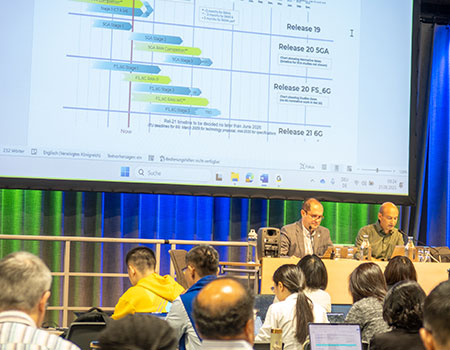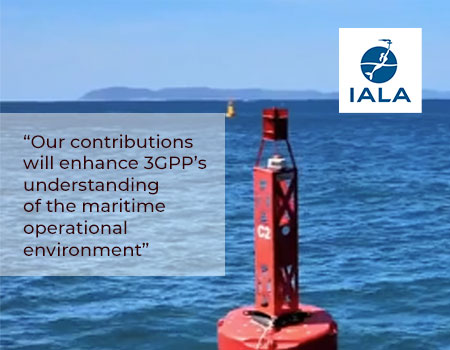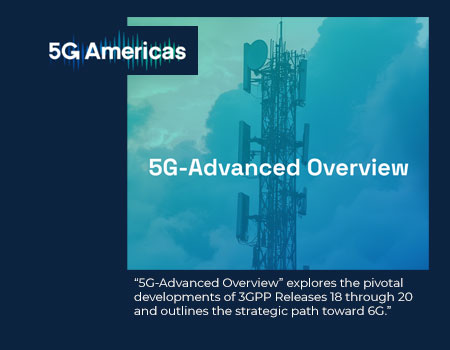5G Systems Development and Deployment
October 8, 2019
In his recent book, 5G NR: Architecture, Technology, Implementation, and Operation of 3GPP New Radio Standards, Sassan Ahmadi, a regular TSG RAN and RAN Working Group delegate, provides a detailed explanation of how the 5G new radio access and core networks are being implemented and deployed. The following article is an introduction to the book, providing a high-level view on 5G systems design, implementation and deployment.
By Dr. Sassan Ahmadi, Xilinx Director and Lecturer at Stanford University
The substantial growth in the number and variety of connected devices and the increase in user/network traffic, as well as the performance limitations of 4G technologies, have motivated industry efforts toward the deployment of 5G mobile networks. Network operators are gearing up toward meeting the dramatic increase in capacity by a combination of; new spectrum utilization, spectral efficiency improvements and ultra-dense network deployments. The 5G system includes intrinsic flexibility and configurability to optimize the network for a wide range of use cases and business models.
The high-throughput mobile broadband use case is primarily based on the evolution and enhancement of LTE technology which facilitates coexistence with the existing radio access networks. However, this legacy support is limited to sub-6 GHz spectrum. All deployments above 6 GHz must use new baseband and radio technologies that improve spectral efficiency, throughput, latency, and other key performance metrics. The 5G mission-critical MTC (low latency and high reliability) and massive-MTC (low energy, low cost, dense coverage) are new use cases that may not rely on legacy support or backward compatibility.
The key challenge in the design and deployment of 5G systems is not only about the development of a new radio interface, but also about the coordinated operation in a highly heterogeneous environment characterized by the existence of multi-RAT systems, multi-layer networks, multi-mode devices, and diverse user interactions. Under these conditions, there is a fundamental need for 5G to achieve seamless mobility and consistent user experience across time and space.
 The NR physical layer has the capability to operate with mixed OFDM numerologies over the same or different RF carrier(s) and has relatively more flexibility compared to LTE in terms of frequency-domain scheduling and multiplexing of devices over the serving base station’s RF carrier(s). The use of OFDM waveform in NR provides the desired flexibility in terms of the size of the spectrum allocation and the instantaneous transmission bandwidth adaptation.
The NR physical layer has the capability to operate with mixed OFDM numerologies over the same or different RF carrier(s) and has relatively more flexibility compared to LTE in terms of frequency-domain scheduling and multiplexing of devices over the serving base station’s RF carrier(s). The use of OFDM waveform in NR provides the desired flexibility in terms of the size of the spectrum allocation and the instantaneous transmission bandwidth adaptation.
The application of active antenna system concept and multiple antennas in the base stations and the devices, which emerged during LTE development, has taken a giant leap in NR with the support of massive MIMO and control/data channel beamforming both in the existing LTE bands and in the new mmWave bands. Aside from physical layer design implications, the advent of the latter features significantly impact the analog/digital RF hardware system design/implementation including filters, amplifiers, data converters, antennas, etc.
Massive MIMO is one of the main enabling technologies in 5G wireless communications. A large number of antenna elements at the base station bring extra degrees of freedom for increasing the throughput and considerable beamforming gains for improving the coverage. In practice, a large number of antenna elements can be assembled into multiple antenna panels for the purpose of cost reduction and power saving. Multi-panel MIMO is expected to be promising for mmWave massive MIMO systems. The NR enables multi-panel antenna array operation through introduction of new reference signals, measurement, and reporting procedures. Two unique NR MIMO features, that is, modular and high-resolution channel state information acquisition and beam management distinguish NR from LTE. The modular framework is composed of three components, namely resource setting, CSI reporting setting, and measurement setting, which associates a resource setting with a reporting setting. These settings serve as building blocks that allow the network to customize the CSI measurement and reporting for a UE.
In order to establish and sustain a link for data transmission and reception, beam management enables the network to perform beam switching using physical-layer measurement and link quality reporting. Beam management is especially relevant for above-6 GHz frequency planning where both gNB and UE employ narrow beams for data transmission and reception. The beam management can further be used for sub-6 GHz multi-TRP scenarios. When used in conjunction with CSI acquisition, the beam management allows the network to establish a seamless and low-latency link with the UE for data transmission. This is specifically important for over-6 GHz where a large number of narrow analog beams are used for data transmission, which in some scenarios requires frequent beam switching. Once the link is established via beam management, CSI acquisition can assist the network in link adaptation.
The NR RF transceiver characteristics are related to the frequency bands in which the 5G systems will be deployed. Due to wide range of the target frequency bands, spectrum flexibility was required for the new radio in order to operate in diverse spectrum allocations. While spectrum flexibility has been used in the previous generations of radio access technologies, it has become more important for NR development and deployment. Such spectrum flexibility is manifested as feasibility of deployment and resource allocations in frequency blocks of different sizes over an extremely wide range of contiguous or non-contiguous spectrum, both in the form of paired and unpaired frequency bands along with aggregation of different spectrum blocks within and across different bands.
Reducing power consumption is an important objective in the design of the network entities and the devices, but it is more critical for the devices due to their limited power supply. The new NR features affect the power consumption of the UE’s major hardware components such as antenna tuning unit, RF frontend, RFIC, baseband modem, and application processor. The integration of RF frontend components can significantly reduce the [insertion] loss and improve the power efficiency of the analog and mixed signal processing. The baseband processing in an NR UE modem has to handle a significantly increased volume of data compared to its LTE counterpart, and this is reflected in increased power consumption at the highest data rates.
The LTE and NR coexistence in the same spectrum, which is required for non-standalone and early deployments of 5G systems, makes it possible to deploy NR in the existing LTE frequency allocations. Since the co-channel NR and LTE carriers need to be aligned at subcarrier level, some restrictions are imposed on the NR channel raster in order to align the position of the NR and LTE carriers. The NR further supports multiple numerologies with subcarrier spacing ranging from 15 to 120 kHz, with direct implications on the time and frequency structures. The subcarrier spacing has certain implications on the RF frontend in terms of the roll-off of the transmitted signal, which impacts the guard bands that are allocated between the transmitted resource blocks and the edge of the frequency band. The NR also supports mixed numerologies on the same carrier, which has further RF implications since the guard bands may need to be different at the two edges of the band.
The official 5G standardization process is still ongoing in 3GPP and ITU-R, expected to be concluded by mid-2020. Nevertheless, prominent vendors and network operators have already started design, implementation and deployment of the Rel-15 features. This trend will grow and continue in the next 5 years when the 5G systems will gain more footprint and maturity. We should be expecting more new service offerings, more advanced services, more deployments, etc. in the next few years.
About the Author
Dr. Sassan Ahmadi is the Director of Advanced Wireless Architectures and Standards at Xilinx (3GPP Member) and a Lecturer at the Electrical Engineering department of Stanford University. He has over 30 years of experience in signal processing and communication system design as well as cellular systems standards development.
 |
For in-depth, theoretical and practical information about 5G NR standards, refer to the book ‘5G NR: Architecture, Technology, Implementation, and Operation of 3GPP New Radio Standards’ by this author. The book takes a top-down systems approach, giving the reader in-depth insight into each system function/protocol/procedure/feature while helping the reader understand how the individual elements fit into the system as whole and operate within that framework. It starts with studying the high-level architecture, network entities and interfaces, interaction/inter-operation among network elements, etc. and then continues with detailed examination of each functional entity and its physical realization and characterization. |


 3GPP News
3GPP News




